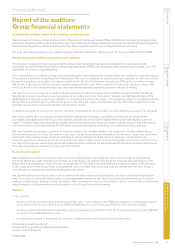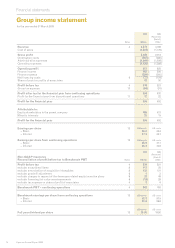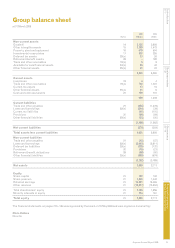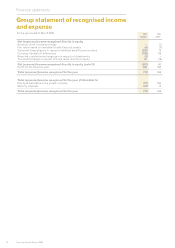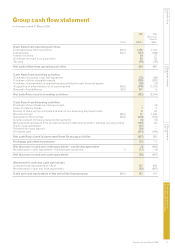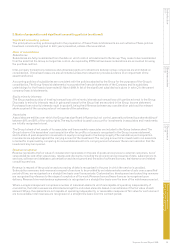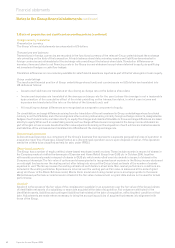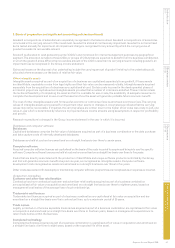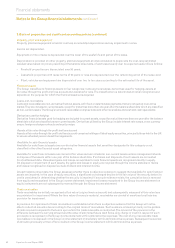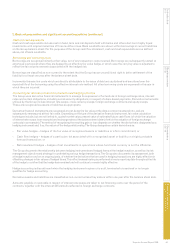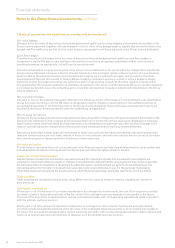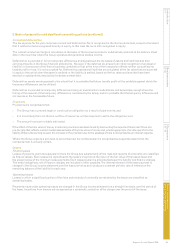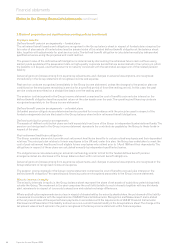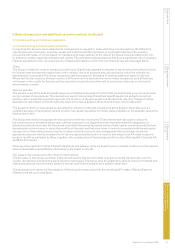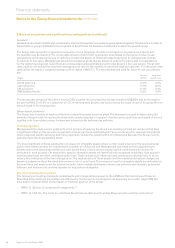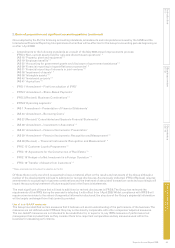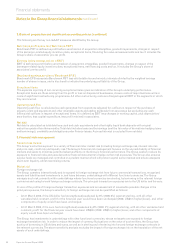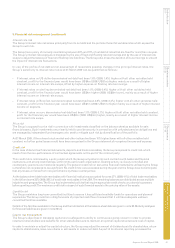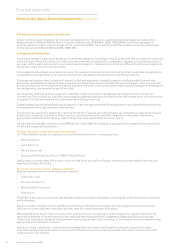Experian 2009 Annual Report Download - page 84
Download and view the complete annual report
Please find page 84 of the 2009 Experian annual report below. You can navigate through the pages in the report by either clicking on the pages listed below, or by using the keyword search tool below to find specific information within the annual report.
82 Experian Annual Report 2009
2. Basis of preparation and signicant accounting policies (continued)
Property, plant and equipment
Property, plant and equipment is held at cost less accumulated depreciation and any impairment in value.
Land is not depreciated.
Equipment on hire or lease is depreciated over the lower of the useful life and period of the lease.
Depreciation is provided on other property, plant and equipment at rates calculated to depreciate the cost, less estimated
residual value based on prices prevailing at the balance sheet date, of each asset evenly over its expected useful life as follows:
Freehold properties are depreciated over 50 years;
-
Leasehold properties with lease terms of 50 years or less are depreciated over the remaining period of the lease; and -
Plant, vehicles and equipment are depreciated over two to ten years according to the estimated life of the asset. -
Financial assets
The Group classies its nancial assets in four categories: loans and receivables, derivatives used for hedging, assets at
fair value through the prot and loss account and available for sale. The classication is determined at initial recognition and
depends on the purpose for which the nancial assets are acquired.
Loans and receivables
Loans and receivables are non-derivative nancial assets, with xed or determinable payments, that are not quoted in an active
market. They are included in current assets, except for maturities more than one year after the balance sheet date which are classied
as non-current assets. The Group’s loans and receivables comprise trade and other receivables and cash and cash equivalents.
Derivatives used for hedging
Derivative nancial assets used for hedging are included in current assets, except for maturities more than one year after the balance
sheet date which are classied as non-current assets. Derivatives utilised by the Group include interest rate swaps, cross currency
swaps, foreign exchange contracts and equity swaps.
Assets at fair value through the prot and loss account
Assets at fair value through the prot and loss account comprise holdings of listed equity securities, principally those held in the UK
to secure unfunded pension benet arrangements.
Available for sale nancial assets
Available for sale nancial assets are non-derivative nancial assets that are either designated to this category or not
classied in the other nancial asset categories.
Available for sale nancial assets are carried at fair value and are included in non-current assets unless management intends
to dispose of the assets within one year of the balance sheet date. Purchases and disposals of such assets are accounted
for at settlement date. Unrealised gains and losses on available for sale nancial assets are recognised directly in equity.
On disposal or impairment of such assets, the gains and losses in equity are recycled through the income statement. Gains
and losses recognised on disposal exclude dividend and interest income.
At each balance sheet date, the Group assesses whether there is objective evidence to suggest that available for sale nancial
assets are impaired. In the case of equity securities, a signicant or prolonged decline in the fair value of the security below its
cost is considered in determining whether the security is impaired. If any such evidence exists, the cumulative loss is removed
from equity and recognised in the Group income statement. Impairment losses recognised in the Group income statement on
equity instruments are not subsequently reversed through the Group income statement.
Trade receivables
Trade receivables are initially recognised at fair value (original invoice amount) and subsequently measured at this value less
any provision for impairment. Where the time value of money is material, receivables are carried at amortised cost less any
provision for impairment.
A provision for impairment of trade receivables is established when there is objective evidence that the Group will not be
able to collect all amounts due according to the original terms of receivables. Such evidence is based primarily on the pattern
of cash received compared to the terms upon which the trade receivable is contracted. The amount of the provision is the
difference between the carrying amount and the value of estimated future cash ows. Any charge or credit in respect of such
provisions is recognised in the Group income statement within administrative expenses. The cost of any irrecoverable trade
receivables is recognised in the Group income statement immediately within administrative expenses. Subsequent recoveries
of amounts previously written off are credited in the Group income statement within administrative expenses.
Notes to the Group nancial statements continued
Financial statements



